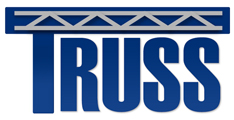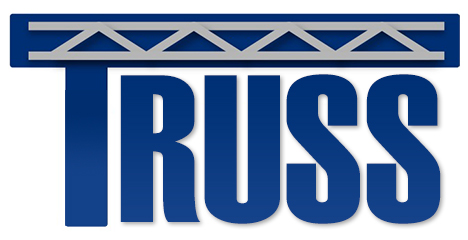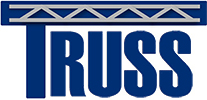 Early Stage Researcher
Early Stage ResearcherUniversity of Nottingham (United Kingdom)
Project 9: Railway bridge condition monitoring and fault diagnostics
Research Interests:
System reliability; Fault diagnostics; Risk assessment; Health monitoring; Nuclear safety; Sensitivity analysis; Dynamic reliability
Biography:
Matteo Vagnoli gained a BSc in Energy Engineering from Politecnico di Milano in Italy. After graduating with honors in his MSc in Nuclear Engineering, he worked as a research fellow and teaching assistant in collaboration with the Laboratory of Signal and Risk Analysis (LASAR), under the supervision of Dott. Francesco Di Maio and Prof. Enrico Zio. His work was centered on developing innovative methods of risk-based post-processing and on-line clustering methods, computational methods for dynamic reliability analysis of industrial systems, as well as Mathematical and Statistical models within the Integrated Deterministic and Probabilistic Safety Analysis (IDPSA) framework, and evaluating the impact of climate change in the Energy supply system.
Before joining TRUSS ITN in September 2015, he had been the referee of scientific journals and conferences and participated in International conferences. A summary of his research highlights and training, dissemination and outreach activities in TRUSS other than network-wide events, is provided in the pdf below, followed by more detailed info on his research outputs.
Research Outputs:
- Di Maio, F., Vagnoli, M. and Zio, E. (2015), “Risk-Based Clustering for Near Misses Identification in Integrated Deterministic and Probabilistic Safety Analysis”, Science and Technology of Nuclear Installations, vol. 2015, Article ID 693891, 29 pages, 2015. [DOI]
- Sahlin, U., Di Maio, F., Vagnoli, M. and Zio, E. (2015), “Evaluating the impact of climate change on the risk assessment of nuclear power plants”, Safety and Reliability of Complex Engineered Systems, Taylor & Francis Group, London, ISBN 978-1-138-02879-1.
- Di Maio, F., Vagnoli, M. and Zio, E. (2016), “Transient identification by clustering based on Integrated Deterministic and Probabilistic Safety Analysis outcomes”, Annals of Nuclear Energy, 87: 217-227.
- Di Maio, F., Baronchelli, S., Vagnoli, M. and Zio, E. (2017), “Prime Implicants Determination by Differential Evolution for Dynamic Reliability Analysis of Non-Coherent Systems”, Annals of Nuclear Energy, 102: 91-105.
- Vagnoli, M., Di Maio, F. and Zio, E. (2017), “Ensembles of climate change models for robust risk assessment of nuclear power plants”, Special Issue of Part O: Journal of Risk and Reliability. [DOI].
Publications in TRUSS
Journal papers
Railway importance in the transportation industry is increasing continuously, due to the growing demand of both passenger travel and transportation of goods. However, more than 35% of the 300,000 railway bridges across Europe are over 100-years old, and their reliability directly impacts the reliability of the railway network. This increased demand may lead to higher risk associated with their unexpected failures, resulting safety hazards to passengers and increased whole life cycle cost of the asset. Consequently, one of the most important aspects of evaluation of the reliability of the overall railway transport system is bridge structural health monitoring, which can monitor the health state of the bridge by allowing an early detection of failures. Therefore, a fast, safe and cost-effective recovery of the optimal health state of the bridge, where the levels of element degradation or failure are maintained efficiently, can be achieved. In this article, after an introduction to the desired features of structural health monitoring, a review of the most commonly adopted bridge fault detection methods is presented. Mainly, the analysis focuses on model-based finite element updating strategies, non-model-based (data-driven) fault detection methods, such as artificial neural network, and Bayesian belief network–based structural health monitoring methods. A comparative study, which aims to discuss and compare the performance of the reviewed types of structural health monitoring methods, is then presented by analysing a short-span steel structure of a railway bridge. Opportunities and future challenges of the fault detection methods of railway bridges are highlighted. [DOI] -> Link to full text in repository
Conference contributions
This paper reports on recent contributions by the Marie Skłodowska-Curie Innovative Training Network titled TRUSS (Training in Reducing Uncertainty of Structural Safety) to the field of structural safety in rail and road bridges (http://trussitn.eu). In TRUSS, uncertainty in bridge safety is addressed via cost-efficient structural performance monitoring and fault diagnostics methods including: (1) the use of the rotation response due to the traffic traversing a bridge and weigh-in-motion concepts as damage indicator, (2) the combination of design parameters in probabilistic context for geometrical and material properties, traffic data and assumption on level of deterioration to evaluate bridge safety (via Bayesian updating and a damage indicator based on real-time measurement), (3) the application of a fuzzy classification technique via feature selection extracted using empirical mode decomposition to detect failure, and (4) the testing of alternative vibration-based damage sensitive features other than modal parameters. Progress has also been made in improving modern technologies based on optical fiber distributed sensing, and sensors mounted on instrumented terrestrial and on aerial vehicles, in order to gather more accurate and efficient info about the structure. More specifically, the following aspects have been covered: (a) the spatial resolution and strain accuracy obtained with optical distributed fiber when applied to concrete elements as well as the ideal adhesive, and the potential for detecting crack or abnormal deflections without failure or debonding, (b) the possibility of using the high-resolution measurement capabilities of the Traffic Speed Deflectometer for bridge monitoring purposes and, (c) the acquisition of bridge details and defects via unmanned aerial vehicles. -> Link to full text in repository
In this paper, we propose a data mining method which is able to automatically analyse the database of the real-time recorded displacements of the tunnel by detecting the unexpected tunnel behaviour. The proposed tool, first of all, relies on a step of data pre-processing, which is used to remove the measurement noise, followed by a feature definition and selection process, which aims to identify the unexpected critical behaviours of the tunnel. The most critical behaviours are then analysed by developing a change-point detection method, which detects precisely when the tunnel started to deviate from the predicted safe behaviour. Finally, an Artificial Neural Network (ANN) method is used to predict the future displacements of the tunnel by providing fast information to decision makers that can optimize the working schedule accordingly. -> Link to full text in repository
More than 35% of the European railway bridges are over 100 years old and the increasing traffic loads are pushing the railway infrastructure to its limits. Bridge condition-monitoring strategies can help the railway industry to improve safety, availability and reliability of the network. In this paper, a Bayesian Belief Network method for condition monitoring and fault detection of a truss steel railway bridge is proposed by relying on a fuzzy analytical hierarchy process of expert knowledge. The BBN method is proposed for obtaining the bridge health state and identifying the most degraded bridge elements. A Finite Element model is developed for simulating the bridge behaviour and studying a degradation mechanism. The proposed approach originally captures the interactions existing between the health state of different bridge elements and, furthermore, when the evidence about the displacement is introduced in the BBN, the health state of the bridge is updated. -> Link to full text in repository
More than 350,000 railway bridges are present on the European railway network, making them a key infrastructure of the whole railway network. Railway bridges are continuously exposed to changing environmental threats, such as wind, floods and traffic load, which can affect safety and reliability of the bridge. Furthermore, a problem on a bridge can affect the whole railway network by increasing the vulnerability of the geographic area, served by the railway network. In this paper a Bayesian Belief Network (BBN) method is presented in order to move from visual inspection towards a real time Structural Health Monitoring (SHM) of the bridge. It is proposed that the health state of a steel truss bridge is continuously monitored by taking account of the health state of each bridge element. In this way, levels of bridge deterioration can be identified before they become critical, the risk of direct and indirect economic losses can be reduced by defining optimal bridge maintenance works, and the reliability of the bridge can be improved by identifying possible hidden vulnerabilities among different bridge elements. -> Link to full text in repository
Bridges are one of the most critical structures of the railway system. External loads may affect the bridge health state, and consequently their safety, availability and reliability can be improved by monitoring their condition and planning maintenance accordingly. In this paper, a Bayesian Belief Network (BBN) fault detection methodology for a truss steel railway bridge is proposed. The BBN is developed to assess the health state of the whole bridge using evidence about the behaviour of the bridge. In this initial study, the evidence is provided in terms of the values of displacement computed by a Finite Element model. -> Link to full text in repository

















